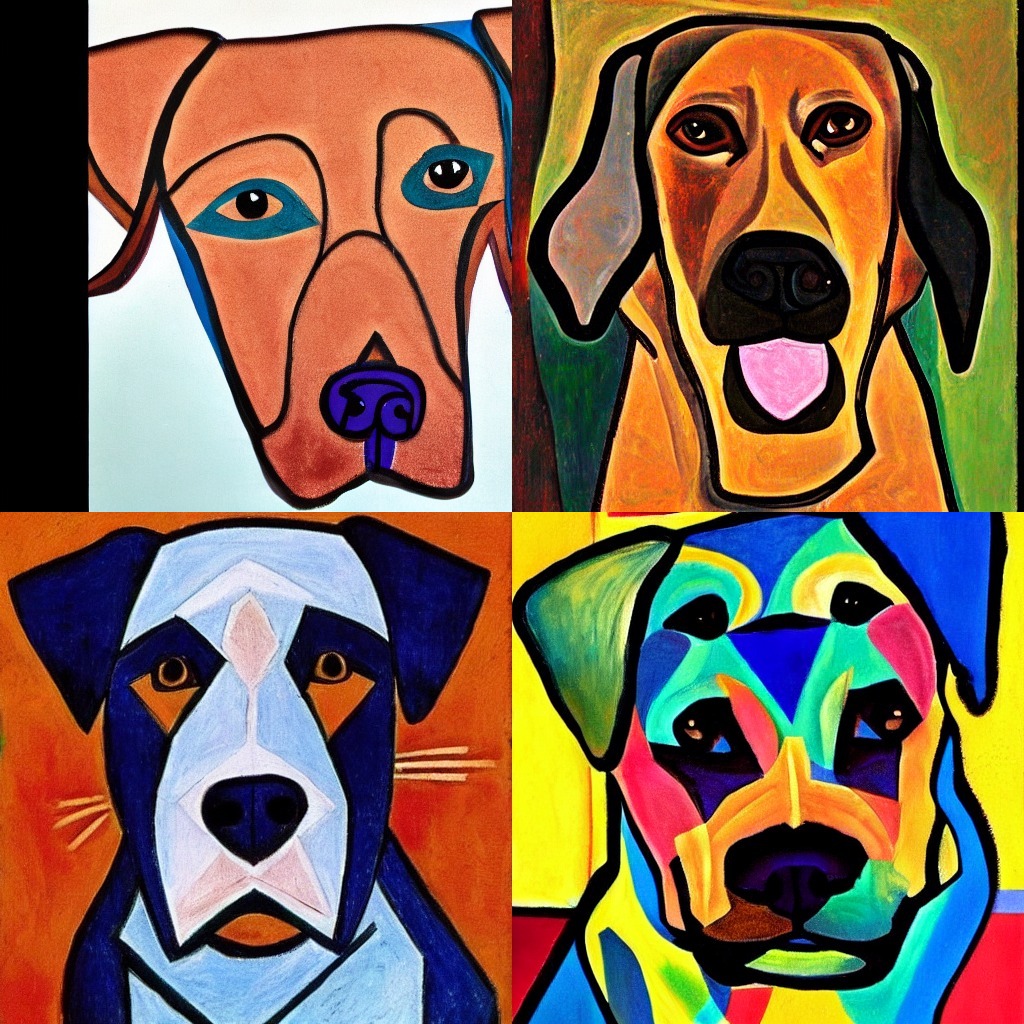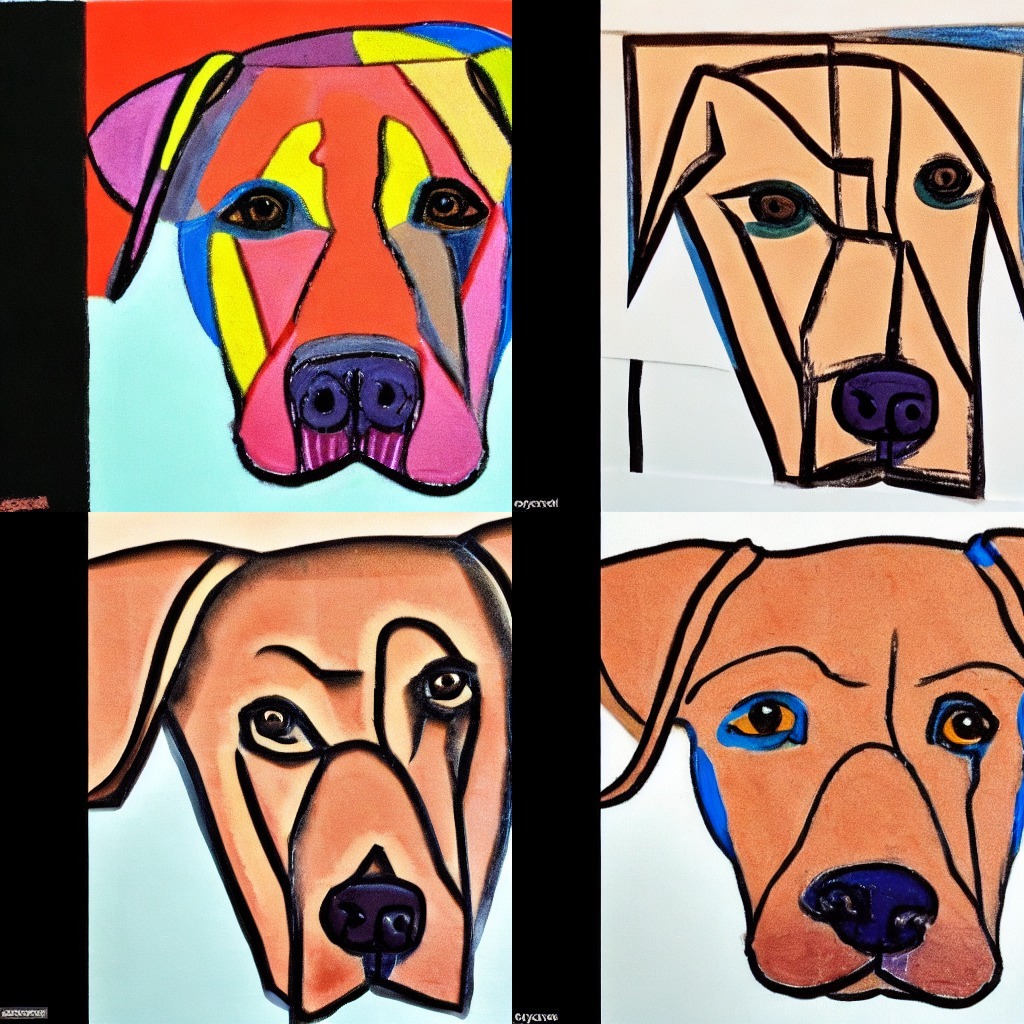Improve image quality with deterministic generation
Improve image quality with deterministic generation
A common way to improve the quality of generated images is with deterministic batch generation, generate a batch of images and select one image to improve with a more detailed prompt in a second round of inference. The key is to pass a list of torch.Generator’s to the pipeline for batched image generation, and tie each Generator to a seed so you can reuse it for an image.
Let’s use runwayml/stable-diffusion-v1-5 for example, and generate several versions of the following prompt:
Copied
prompt = "Labrador in the style of Vermeer"Instantiate a pipeline with DiffusionPipeline.from_pretrained() and place it on a GPU (if available):
Copied
>>> from diffusers import DiffusionPipeline
>>> pipe = DiffusionPipeline.from_pretrained(
... "runwayml/stable-diffusion-v1-5", torch_dtype=torch.float16, use_safetensors=True
... )
>>> pipe = pipe.to("cuda")Now, define four different Generator’s and assign each Generator a seed (0 to 3) so you can reuse a Generator later for a specific image:
Copied
>>> import torch
>>> generator = [torch.Generator(device="cuda").manual_seed(i) for i in range(4)]Generate the images and have a look:
Copied

In this example, you’ll improve upon the first image - but in reality, you can use any image you want (even the image with double sets of eyes!). The first image used the Generator with seed 0, so you’ll reuse that Generator for the second round of inference. To improve the quality of the image, add some additional text to the prompt:
Copied
Create four generators with seed 0, and generate another batch of images, all of which should look like the first image from the previous round!
Copied

Last updated